Why do eggplant leaves turn yellow and what to do?
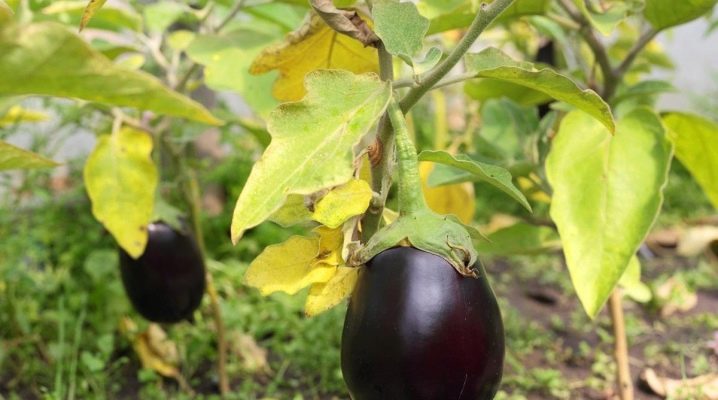
Solanaceous crops are characterized by unpretentiousness, but there are some difficulties in growing them. Quite often, gardeners complain about the appearance of yellow leaves on plants. In the article we will look at why eggplants turn yellow and what to do about it.
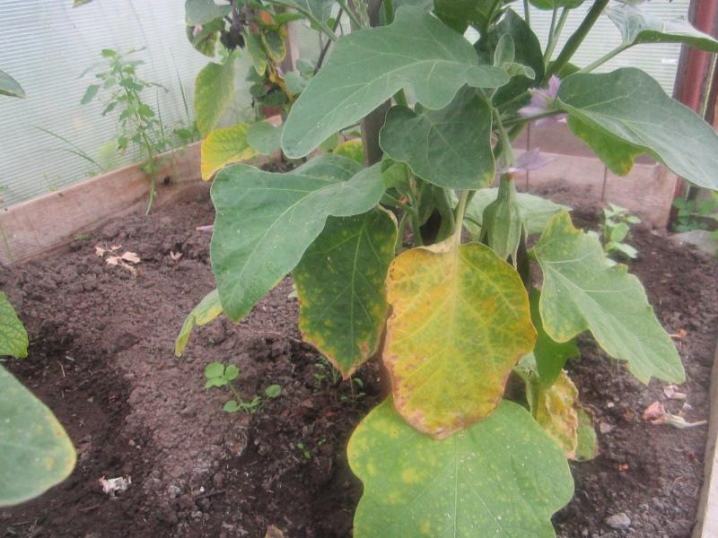
Causes based on symptoms
Healthy eggplants have strong stems and wide green leaves. If the gardener noticed changes in the color of the leaves, you should take a closer look at the plant, since this already signals some kind of disease or improper care. Quite often, the reasons for the yellowing of the leaves in eggplants are improper lighting, top dressing or watering. Although there may be more serious reasons when pests attack the beds, or the plants get sick. Changes in growing conditions, harsh cultivation or severe frosts can also lead to yellowness on the plants.
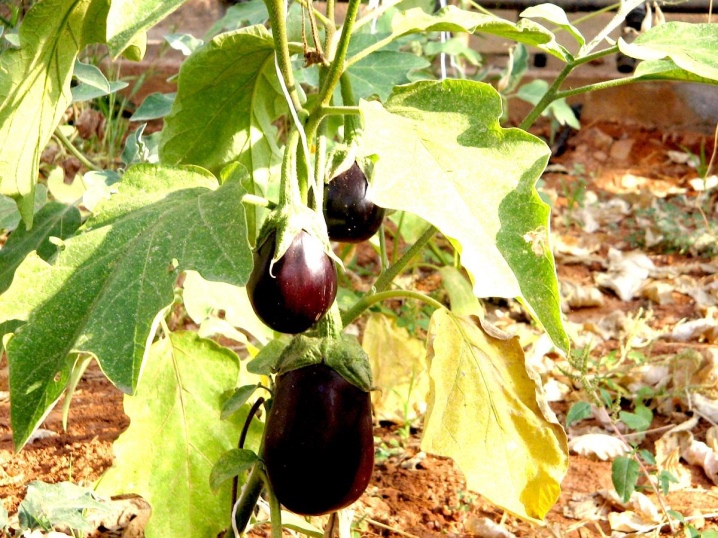
Yellowing of the lower and upper leaves
Usually, yellowing of the bottom sheets of eggplants can be considered a natural process, as long as the plants are not sick or otherwise exposed to negative influences. Usually, before winter, plants are prepared for wintering in this way. Eggplants shed their leaves. All forces are directed to young shoots, they are being prepared for future fruiting.
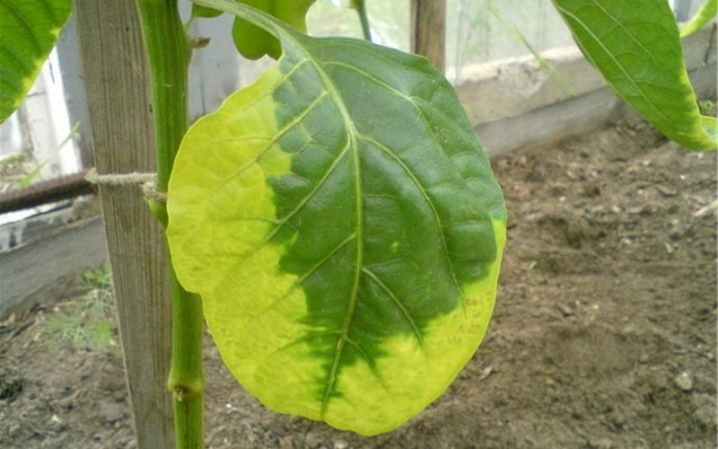
The yellowness of the lower leaves should not cause much concern. If the young upper foliage begins to suffer, a cause should be found to avoid harmful consequences. Top sheets can be covered with yellow spots in the following cases:
-
there is not enough nitrogen, or it is poorly absorbed, so the plant does not increase the green mass - on the contrary, its leaves begin to wither and dry out;
-
a small amount of iron also manifests itself in the yellowness of the leaves, but usually only the veins become yellowish;
-
the lack of potassium is also manifested by yellowness, but at first the tips of the leaves begin to suffer; if the necessary measures are not taken immediately, then the harvest will be very weak;
-
an insufficient amount of boron leads to the fact that not only the leaves, but also the ovaries fall off; initially, yellowness and deformation of the plate appear;
-
the presence of uneven, chaotic spots indicates that the plant is affected by a fungal disease; you should immediately proceed to active control measures, and even better to do prevention in the form of spraying plants with an antifungal agent.

Deformation
If the eggplant leaves begin to change shape, curl, then such a deformation indicates that the plant can be saved by complex fertilization or proper lighting.
If the eggplant receives full light and nutrition, then the reason may be that the plant is attacked by aphids or a virus.
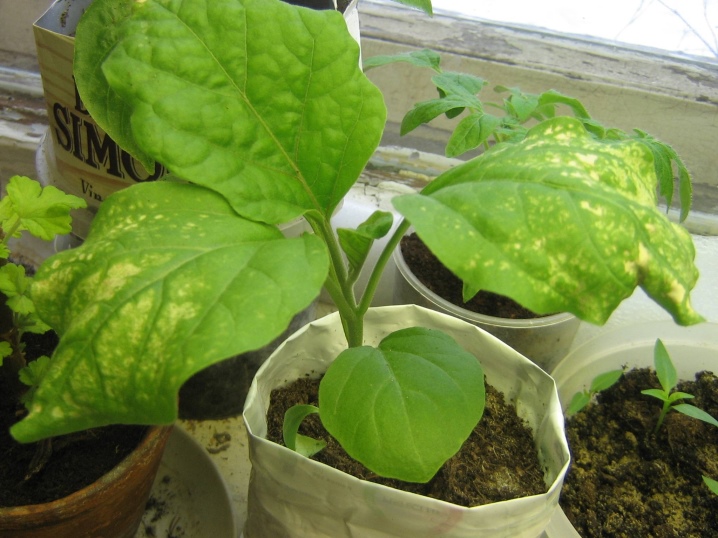
Leaves turn yellow and wither
Usually, the leaves begin to turn yellow, wilt and dry when they receive a lot of moisture. In this case, it is imperative to reduce the amount of watering, the earth should dry out, and to treat the beds, you will need to use special antifungal drugs. In addition, the lack of moisture also negatively affects the general condition of the eggplant leaves, they also turn yellow and dry. In extreme heat, it is recommended to increase the amount of watering.
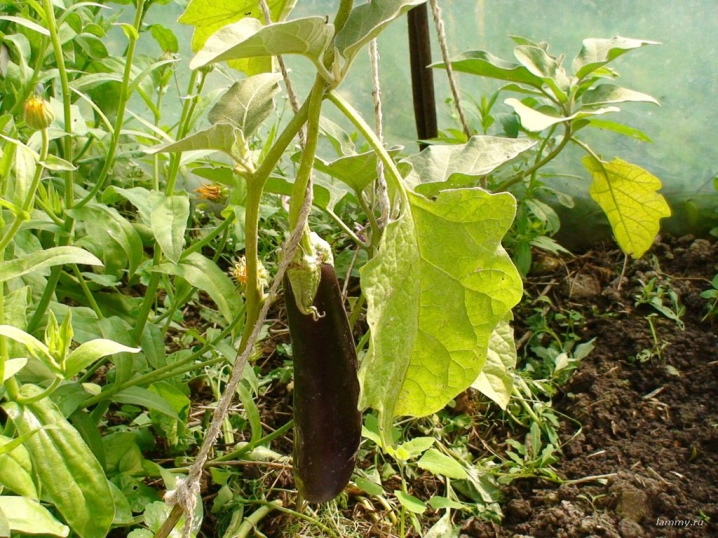
What if the leaves turn yellow after planting?
It should be noted that plant transplanting is quite stressful for him. First of all, weak shoots suffer. If after transplantation they grow poorly, a slight yellowness appears, then this may be a natural reaction to the transplant, you should wait a little. But there are other reasons that lead to yellowing of the leaves after planting, namely:
-
damage to the roots leads to the fact that the eggplant cannot take root in a new place, it lacks strength;
-
high humidity is especially dangerous for young plants, therefore, the irrigation regime should be adjusted;
-
the soil may contain spores of a fungus or larvae of parasites, therefore, it is advisable to disinfect it before transplanting;
-
night frosts act as stress for plants after transplanting, so the yellowness on the leaves is understandable.
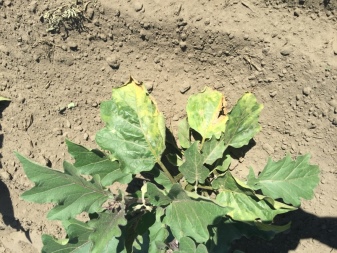
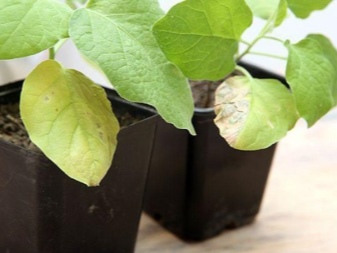
To help the plant choose the right treatment, you should determine the reason why the leaves began to turn yellow.
Troubleshooting problems in different conditions
To prevent yellowing of the leaves, it is recommended to stick to a few nuances when growing eggplant.
-
An important role is played by the choice of seeds for further growing seedlings. Seeds should only be taken from healthy and ripe fruits. After collection, they should be thoroughly dried, and then stored in special bags that allow air to pass through. If the seeds are not collected on their own, but are bought in a specialized store, then it is important to pay attention to the date of manufacture and the time of planting. To disinfect the seed, it is recommended to treat it with a potassium permanganate solution (rather weak).
-
If you plan to plant eggplants in open ground or a greenhouse, then you need to take seedlings exclusively with strong stems and dark green leaves. It will take 2 weeks to fertilize the land. The best choice would be ammonium nitrate; about 30 grams of the substance will be required for a bucket of water. During the season, you will need to feed 4 times. In addition, you can alternate feeding using potassium sulfate, because this substance allows you to support the plant during active growth, thereby avoiding yellowing of the eggplant leaves.
-
It is very important to carry out root support after loosening the garden. You need to process the ground with a superphosphate solution. To prepare it, you will need 20 grams of the substance per 10 liters of water.

If the eggplant suffers from fusarium wilting, then it should be treated as follows:
-
adjust the frequency of watering, it is necessary to exclude stagnant water;
-
in the heat, the bushes should be covered with special materials;
-
during planting, add an antifungal agent to each well to immediately treat the plant against possible diseases, for example, "Trichodermin".
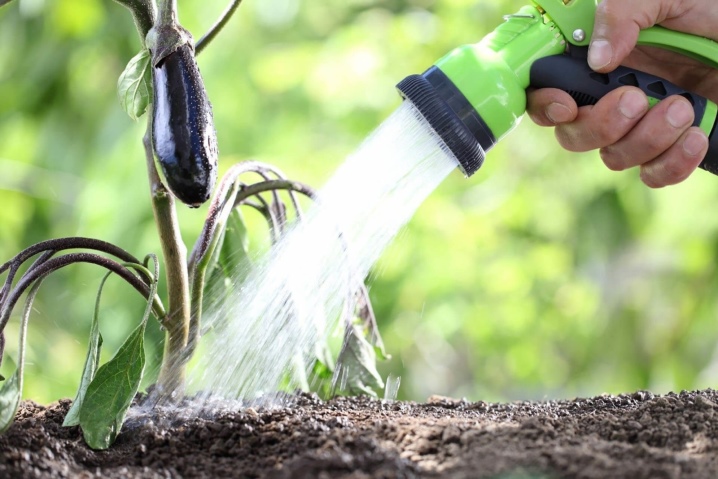
It should be noted that yellowing of the eggplant leaves is not a sign of the death of the plant, if at the same time the gardener takes proper care of the plant, has chosen the right place for planting, and only healthy seeds are used for planting.
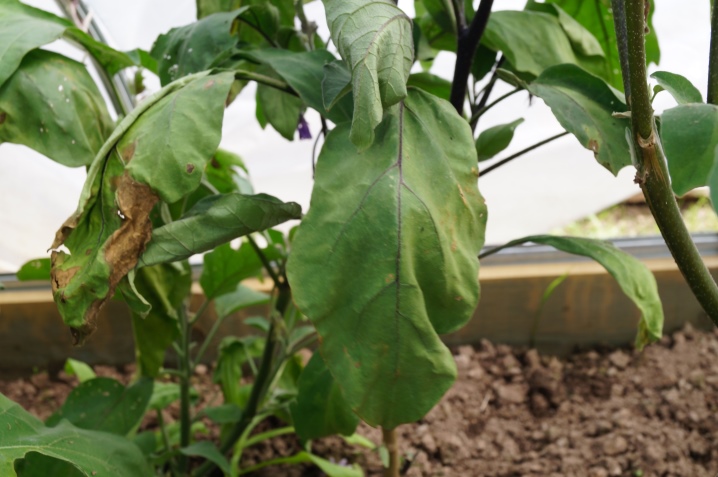
It is recommended to adhere to preventive measures, then a rich and tasty harvest can be collected from the eggplant bush.
In the open field
Usually, eggplants planted outdoors are the most affected by adverse weather conditions, as well as various pests and diseases. In the open air, the following problems and their solutions are possible:
-
during the period of prolonged rains, the leaves turn yellow and begin to rot - it is advisable to cover the eggplants with a film for this period, then the plants will suffer less;
-
if the weather is rather hot and dry, then, most likely, yellowness appears from drought and high air temperature - in this case, it is better to cover the planting after lunch, and it is also necessary to provide it with the necessary amount of moisture;
-
if the leaves have become a small speck, then it may be sunburn - you need to cover the leaves from the sun's rays, then the dots will disappear over time;
-
depletion of the soil leads to poor plant growth and yellowing - it is recommended to regularly produce complex fertilizers;
-
when the root system is damaged, the eggplant uses all its forces to restore it, so the ground part begins to need nutrients, and the foliage suffers first of all;
-
if dots and spots of an incomprehensible shape appear, then a mosaic may become the cause - this disease is little studied and is incurable, usually the spots begin to crack, plaque and further deformation form on top.
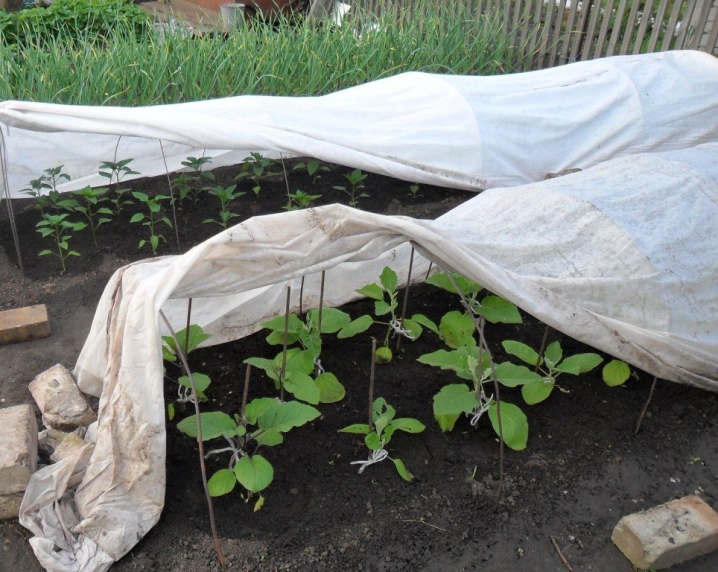
In the greenhouse
When growing eggplants in a greenhouse, it is quite easy to maintain humidity and temperature conditions. And also they are not threatened by frost, strong gusts of wind and drought. It would seem that the conditions are ideal for obtaining a rich eggplant harvest, but various pests and fungi feel great under these conditions. Let's consider possible problems and methods of their elimination.
-
A high level of moisture contributes to the spread of fungus, therefore it is advisable to place an automatic mechanism in the greenhouse that will water at a certain level of humidity.
-
It is recommended to adhere to the optimal dosage when applying top dressing and spraying. The season and level of development of eggplants play a big role, because if the plant receives more fertilizers than necessary, then chemical burns cannot be avoided.
-
Usually in greenhouses there is a high probability of acidification of the soil. It is better to apply fertilizers, which contain nitrogen, and then add a little ash to it.
-
The ground in the greenhouse does not have contact with the environment, so it loses nutrients quite quickly. It is advisable to deal with its processing with the help of folk remedies, as well as to carry out its periodic replacement. It is important to remember to decontaminate, control the acidity level and make organic additives regularly.
-
If the leaves fall off, and the plant is so sick that it does not respond to treatment, then it is better to destroy it as soon as possible so as not to infect other bushes.
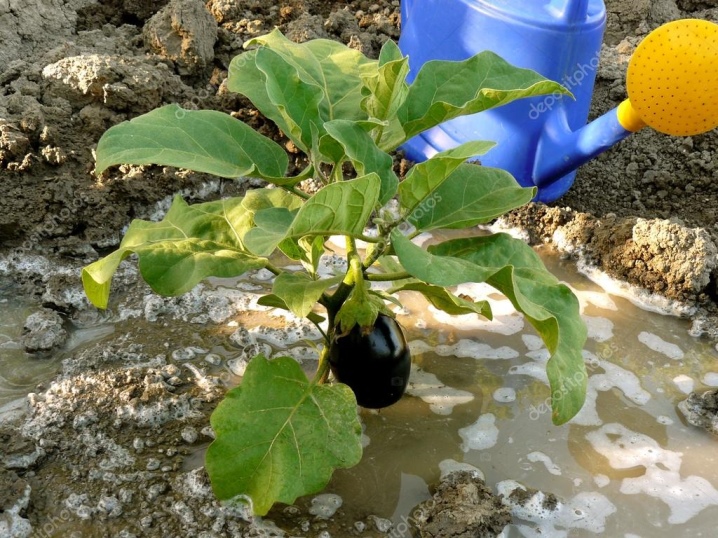
At the first sign of yellowing of the eggplant foliage, you should carefully examine the plants. The absence of traces of pests, for example, cobwebs, glue spots, as well as butterflies, indicates that the reason may lie in the microclimate of the building.
If the level of moisture and temperature is normal, it is advisable to prevent various kinds of diseases. And then it is recommended to carry out a comprehensive feeding of the bushes.

On the windowsill
If you grow eggplants on a windowsill, then not only problems with the level of moisture and soil may arise, but also other problems, therefore, the following rules should be followed to avoid yellowing of the foliage:
-
sprouts should always be warm, so it is advisable to maintain a temperature of +20 degrees;
-
in containers it is very important to maintain the required level of acidity;
-
plants should receive the required amount of daylight, if it is not enough, artificial light should also be used;
-
plants are recommended to be hidden from direct sunlight;
-
planting seedlings should be done during the formation of the root system.
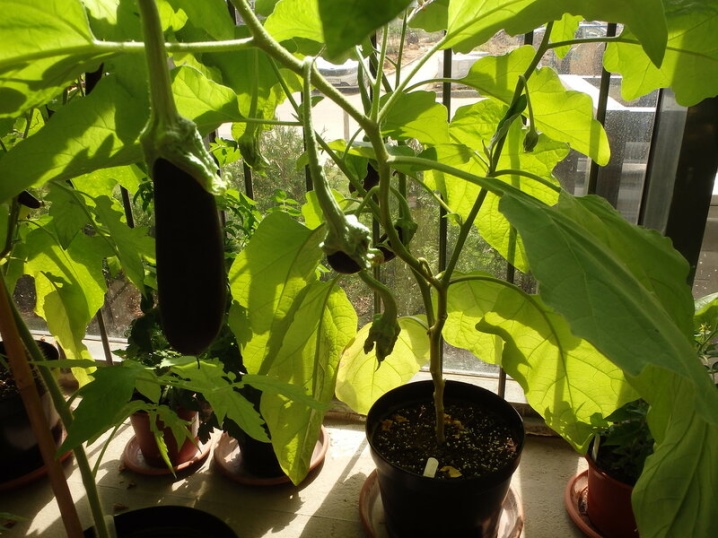
Prevention measures
To prevent eggplant leaves from turning yellow, it is advisable to adhere to certain conditions of detention. It is very important to select healthy planting material. When caring for eggplants, you should create the required temperature and humidity level. Regular ventilation of the room and loosening of the soil helps to ensure the supply of air to the root system.
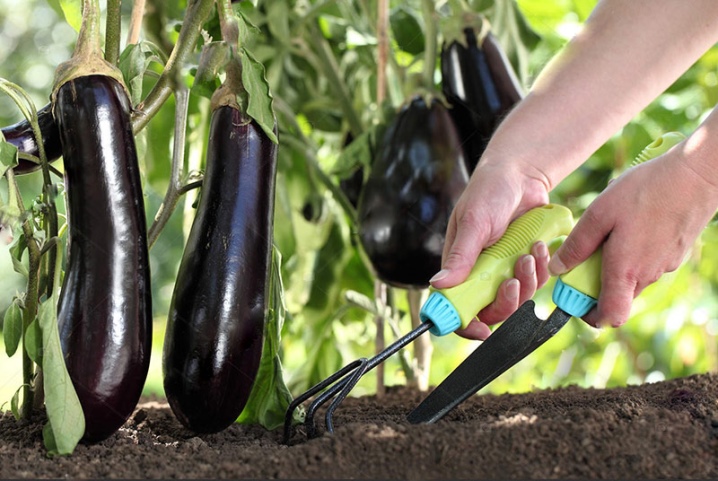
When caring for eggplants, the following preventive measures should be taken:
-
when transplanting seedlings, it is necessary that the temperature at night does not drop below +18 degrees, and during the day does not rise above +28 degrees; if there are temperature jumps, it is impossible to avoid yellowing and wilting;
-
during planting of seedlings, it is necessary to disinfect the seeds, select the soil, and provide proper lighting;
-
it is recommended to protect the plant from fungus using natural or special means;
-
regular loosening of the soil will help create optimal conditions for moisture and air permeability;
-
it is advisable to feed the plants according to the schedule.
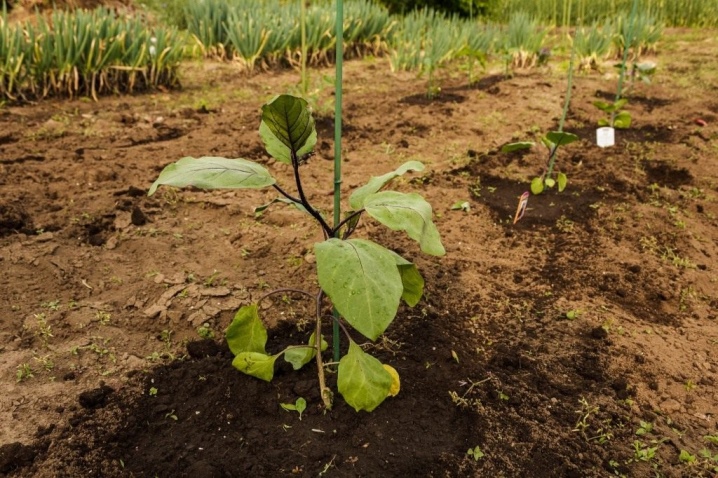
If the eggplant leaves begin to turn yellow, you need to immediately find out the reason in order to eliminate it as quickly as possible. Sometimes it is necessary to remove the affected plants so that the disease does not spread to others. A quick response to the problem will save the crop.














The comment was sent successfully.